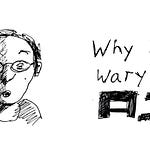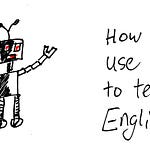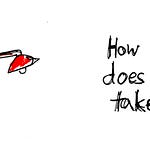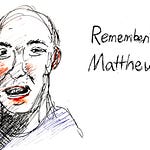AI-generated transcript:
Happy Friday.
I just wanted to make this video.
Well, actually I was approached in the comments section by a chap called Alan, who's in Okinawa.
Hello, Okinawa.
Who said, hey, tell us more about your publishing and self-publishing.
And I guess he's interested in how you go about publishing your own textbooks and so on.
And so that's quite a big topic.
but I'm happy to talk about it because it's something I've been doing for the last 10, more than 10 years.
So I guess I know a bit about it, not a lot, but maybe more than if you'd never done any self-publishing.
It's quite a big topic, so I'm just going to go into it a little bit, make this video to just sort of get the ball rolling and then I'll write more about it with more specific, useful stuff, if you're interested.
If you're not,
See you next time.
But if you are interested, I mean, the first point is, well, why make your own textbooks?
And, well, I'll talk about that maybe at the end, perhaps.
Let me just show you what I've got and then you can see, it kind of makes sense why you would make your own textbooks.
I started making, I actually started, I did a charity book called Quake Book
246, which was to raise money for the Red Cross back in 2011 after the earthquake.
But that got me interested.
I'd been interested in trying to publish my own novel and everything, and I eventually have.
I have published two novels now, self-published.
But I never made much money at it.
However, it is a really good thing to have for your English school having your own textbooks and that's what I've been working on little by little.
Probably I do like every year I complete one new textbook or I have done over the last 10 years but between one and two textbooks I complete each year and then I start using that as the set text for that class.
You may think, oh, how do I even begin to do it?
Well, it really just starts with your notes.
Start with your teaching notes.
Say like you teach a class and you have, let's hope you've got some kind of a syllabus or something, and maybe you've based it on a previous textbook, like a Oxford University Press Let's Go.
I think that's what I started using.
But you could use anything that has a sort of recognizable syllabus and you can see the progression and what the
grammar and the language points that they're teaching.
And then you just teach your own version of that, maybe following the same syllabus, but adding in your own stuff.
Nobody can copyright the English language.
So, you know, following the same syllabus, but with your own materials, that's called a new book.
So that's how you start.
You start with these notes and you keep your notes.
And maybe the second year that you're teaching the same lessons, the next bunch of kids that come through,
Then you maybe perfect it and really hone it down so that you've got actually a pretty good lesson.
Actually, I think it takes about three times to teach the same lesson.
First time to get the basics, second time to modify it, third time to really know what you're doing and to discard the useless bits.
Anyway, once you've got some lessons that you really like, keep a hold of it and you can make a book.
I'll show you how to do that specifically in a moment but let me just show you these books.
These are, this is an example, this is a, I've just scribbled on the top there, ignore that, my school's name, but anyway, Tower Talk Primary 4, Patrick and Yoshi Sherriff, myself and my wife, and as you can see I drew the cover.
In fact all of the artwork throughout the book
is by me.
Well, I think that was from a catalogue that I taught, but the advantage of doing the terrible pictures, but some of them are okay.
The advantage of doing your own artwork is there's no copyright.
I'll show you another thing that you can do if you're not good at art, which I wasn't, but I sort of taught myself.
And although that's kind of a bit amateurish, it kind of suits for little kids.
But anyway, I made, this is a, you know, this is a textbook and there's 42 lessons.
So that's one lesson.
Each lesson is a double page spread as it's called.
And what I do is on one side I have the bit that you're teaching and on the other side, that's the workbook.
So it's like a textbook and workbook all in one because I always thought it was weird that we make kids or the publishing companies make teachers buy a teacher's version and then what else do you have to buy?
A textbook and a student's workbook.
I just seem a bit of a faff.
Why not just have one textbook?
You know, you don't really need a teacher's book.
Once you've been teaching at least one year, you kind of know what you're doing a little bit.
I mean, what I mean is that you can see, oh, I see that.
I see what's going on.
And then you just start teaching from it.
Having the teacher's book is just an extra way that the publisher makes a bit of money, frankly.
But anyway, so I've got like, so on one side is the teaching point.
These are comparing things.
He is older than she.
The lion is bigger than a cat.
Mount Fuji is taller than Mount Scuba.
Okay, you can see what's going on there.
Comparatives.
There's some exercises for the kids.
And that would be like a five or 10 minute version of the section of the lesson that you might have, a weekly lesson.
So, you know, it's really integrated into what I'm teaching.
And it really helps a lot by having a textbook, even if it's not the most beautiful book.
And even if there are a few typos, but I think I've stumped them out mostly now.
Yeah, and you can do fun things.
You could have a word search and stuff like that.
So anything that works, you can turn into your lesson.
And so I, you know, that took, you know, that's like one year's worth of lessons in there.
So then you can give it to your students or sell it to your students or whatever.
And then your students have something really professional.
They've got something that they can bring every week.
You know what you're teaching that week.
The parents know what you're teaching that week.
Everybody knows what's going on.
And the parents can help with homework.
So that's good.
That's why I do it.
So I got a whole, started out with kindergarten books.
I've got three kindergarten books, which is the same sort of thing.
And then I went on to junior high school.
So then I got some junior high school ones.
This is junior high school.
It's a bit tatty because I use it to teach from.
This time though, now you can see what I've done is, this is pre AI, but I went to get a lot of the art, all of the artwork is not by me, thankfully now.
I got it from website 123rf.com I think, but it's a stock website place.
You can find them on the internet.
Just look for stock art and you pay a certain amount and they'll let you use whatever artwork that you like.
You pay a certain amount and then you can use it up to 100,000 times, 100,000 printings.
That ain't going to happen, so it's no problem.
So this whole image is just from a website, just a photo on a website.
But as you can see, it looks pretty professional.
It's a step up from my ones that I made before.
I would say it's as good as something that you could pay money for from a regular publisher.
These are all made by me and published by Amazon.
I'll talk about that some more.
Yeah these are the textbooks and also I've done like readers like here's a kind of walker this is a very very short thin but it's intended to be used you can buy it individually for the class it's like a 20 page reader for kids you know like the Oxford University Press has these kinds of things but ever so boring and a bit too long this is much better
You can make this yourself.
And one reason I wanted to show you this was I've got some of the files that I can show you on this computer.
Now, how do I print these?
How do you go from an idea?
Okay, you know, you've got your notes, or you want to write a story.
And how do you go from that to having it published on Amazon?
Well, you've got to write the damn thing.
And let me just, let me show, let me share my screens, share my desktop.
Hopefully it's all in order.
Let's put this desktop there.
Okay, share.
Okay, so here, oh, okay.
Here is the book that I was showing you, this one.
This is the junior high school.
And this is what it looks like as a, this is on pages, which is free software.
right on an apple but you could be using anything you could be using word it's just like word right and these are all these are all you know it's just like a very big word file or pages file you could click on it you could move the text boxes around this is what i made now you can see it's quite a lot of quite a lot of work to do
What to say about that?
Yeah, the first time you make it, it takes a really long time.
But then the second time you make it, you've got a template.
And the third time, you've improved the template.
And before you know it, you can just reproduce them pretty, pretty quickly.
And if you think about it, I mean, maybe it's easy for me because I used to work in newspapers, and this was kind of my bread and butter.
But I just treated each lesson like a news page.
Okay, you've got your headline across the top there.
You've got your
your introduction there, and you've got your story there.
And then that's the workbook that go in there.
Now, this is just me, you would have your own style or whatever, but as you can see, it's just a file, right?
I'm just zipping through here.
These are all the pages on the side.
So it's just a matter of making it, and it doesn't have to be this fancy.
It could be ever, ever so simple, right?
And this is like a letter size, I think, US letter size, like A4 size.
which you can then print.
So, okay, I'll get to that later.
So you make this, sorry, I'm zipping through, just so you get an idea.
And this is all, you know, there's all things that you can edit.
There's the pictures and I can edit it, whatever.
Or if I've got a typo, I can go in there and change the word.
It's a word file, okay?
And for ever such a long time, that's all I used was just using the free software on your Mac or your PC or whatever you've got.
And that's perfectly fine.
It's a faff to set up, as I say, to make the template.
But once you've got one, you can reproduce it.
Am I repeating myself?
I am, aren't I?
Okay.
Let me close that down and show you something else.
By the way, yeah.
So every time you make a book, there's two files.
What I just showed you was like the interior pages, but you also need a cover.
If you make a paperback, if you imagine it's like wrapped around, right?
So these are some of my Hannah Walker books.
Let me zip to the one that I've got at hand.
Oh, here we are.
Hannah Walker and the Trip to Jupiter.
Here it is.
This is the real thing.
But that's what it looks like, because if you think about it, that's the cover front and back.
So again, that's just a pages file.
And
Yeah, okay, there's a lot of faffing about making this, but once you've made it, again, it's a template.
I did 25 of these, no, I'm working on 36 of them.
As you can see, they're very similar.
I just changed the artwork slightly, which I got from the website.
Anyway, and you make that, and then you save that, I think it says a PDF, and upload it to Amazon.
No, sorry, it's a JPEG, but it's just a matter of saving the page.
and the interior is a PDF, which you upload to Amazon and that will make a printed copy.
It's more to say about turning it into a Kindle, but it's essentially the same process.
Anyway, you can make your printed book like that using software that you have on your computer.
That's all I did here.
That was fine for me for the last, oh, about 10 years.
I've since updated further.
Let me just close that down.
And I use what's called Vellum.
This is an example of Vellum.
That's that same book and actually what it looks like.
And Vellum is a software thing that costs about, well, at the time of making this is about 20 to 25,000 yen, I think.
But for me, I publish so many books.
I've got 76 on Amazon, 76 titles.
It was cost effective for me to get some decent software.
Now this is really good for producing a paperback size book with not much artwork in it.
So you can see here that on the right hand side is what the page looks like, on the left is the information.
So let's see, I've got my copyright page here,
You see, I can cut and paste all of this and make a new book and then just change it.
So it looks like that.
It designs the contents page for you.
Vocabulary, I have to type this in, but I went through like this.
On this side is what the page looks like.
So you can see what the book looks like.
And then that's what it ends up looking like.
Let's see.
Hannah and the Aliens.
Number four.
Hannah and the Aliens.
There we go.
Hannah and the Aliens.
That's what it looks like on paper.
This is what it looks like on screen.
So you make it using vellum.
It really saves you a lot of time.
You can move chapters around if you change your mind.
It's really good actually for writing your own novel.
Oh, there's my novels, two of my novels advertising for it.
But anyway, I don't want to go into all the details, but I hope you can see that using something like this actually saves you a lot of time and makes it a really, really professional looking
but not so useful for textbooks maybe because it's only good for that sort of smaller size.
However, I do use it for my high school textbooks and adult textbooks because they're only a little bit bigger than this and it really saves a lot of time and effort formatting for publishing on Amazon.
I'm racing through it.
But anyway, on this, so if I go back to here, let me see, my head's in the way, I'll move myself down the way.
Over here, I don't know if you can see it, I don't know where my talking head has appeared, but over here you can generate, you can turn it into, let's say, I'll click on this, generate, and it'll say, look, Kindle and print.
This is the Wanderer of Vellum.
And so, oh, I want to have a Kindle book and I want to have a print book.
I would just click on there and then generate.
And it's a matter of a few seconds.
And it makes you the file.
And then once you've got the file, a PDF and a, oh, it's all PDF, isn't it?
I think.
Oh, and the Kindle file is more, it's a J, no, what's it called?
An EPUB, it's called, but that's, it's just a formatting convention.
Very technical, but as you can see, it's just a click of a button and you can make it and then upload that to Amazon.
Right.
Now, is that everything?
I'll close that down.
If you want to see other examples of stuff that I've done, let me just put this up here.
If you go to, on the Free Talk TEFL website, go to freetalktefl.substack.com,
You can find up here on the top here books and click on books and you can see all the books that I've produced right just here.
If you want to see what it actually looks like choose an age that you're interested in.
Well we were just looking at that what we were looking at there junior high school go and click on junior high school.
Yeah I was using this pink book wasn't I?
So there's some explanation but then all I've done really is just made a photocopy pdf
or a screen grab, I think it is, of the relevant pages, which you're happy to use.
I'm happy for you to use individual lessons if it helps you out.
It'd be really nice if you get the whole book, but, or, you know, just make your own book, make your own stuff.
Don't rip my stuff off, please, but please use it as a template or an example.
I'd be more than happy for you to do that.
Just don't word for word copy it, right?
My people will see your people.
No, no.
Yeah, so that's what I wanted to say there.
Let's go back to the home page.
Yeah, well, we can close this down.
Hold on.
Can I close this?
Stop share.
Okay.
Yeah, so just
Why do all this stuff?
Well, of course, there's the business aspect of, you know, you could sell these books to your students or just give them to your students.
You can sell it on Amazon.
I will tell you this though, Amazon, it's hard to sell anything on Amazon.
I mean, what I mean is anybody can buy from there, but if you think that just posting it to Amazon will mean you'll get lots of people buying your books, it doesn't work like that.
It doesn't work like that.
Amazon will try to get you to pay for advertising, to advertise your books on Amazon, and Amazon gets a cut.
I forget what the exact percentage is, but it's about, it's around like 40% of the cover price Amazon keeps.
Fine.
They are really good at printing and it's good quality.
And once you've sent the files and once it's been approved, it takes about 72 hours.
But then when you, whenever you order a book, it can arrive in the post the next day.
bit longer, I suppose, if you're in Okinawa, but it's really convenient.
When I first started out, you had to order them from America and it would take a couple of weeks for it to arrive.
Not anymore.
So why do I do this?
Partly because it's fun.
but I mean, it does take a lot of time, but the other thing is it's a way of 10X in your business, maybe.
I mean, I don't know if I will actually 10X, but you know, you do your work and it takes a lot of time, but once you've created this, you can then use this every year with your students.
You can then sell it potentially online to anybody in the world.
It doesn't usually happen because then you're in the world of competition and who would buy from me?
I don't know, but I'm sure you can see the potential that you could, in theory, you know, sell around the world.
And suddenly what you do in your little classroom, wherever you are, or in your coffee shop, has a big impact, a potential big impact.
And that's what I really think is really exciting about, for me, for the future,
And in fact, what I see my school more as is like a laboratory where I test out new teaching materials and teaching stuff and then producing these books.
Maybe in the future, all books will become apps, and you could take this material and turn it into an app, I guess.
I'm not really up to date or au fait with all that stuff, but you could.
Why not?
It's the same principle.
So that's why I do it, and that's why it might be useful for you.
I will write some more details about this because I've probably given too much information too quickly.
And you don't have to stick with Amazon, it's just that they're the biggest, biggest dog on the block.
Is that the right expression?
The biggest dog on the block.
Repeat after me, the biggest dog on the block.
Biggest Cat?
No, anyway.
Yeah, so there's lots more details.
I'll give you some more details, but I hope, I'm intending this to inspire, that you could do the same.
I mean, my next project is I want to turn these books, which are really focused on my school, into something, use the same materials or the best of the materials, turn them into actual textbooks for freetalktefl.com.
No, it's not, freetalktefl.substack.com and sell them to you, sell them to other teachers.
Really hone it down so that it's more useful for almost anybody.
But don't wait for me, make your own stuff, you know.
It's possible and it's more than possible, it's actually desirable.
I think, frankly, my books, for me, because they're made for me, they're perfect.
Not perfect, but I mean, perfect for me.
And that's the beauty of it.
So I don't have to wait for something good from Oxford University Press or Longman Publishing or Pearson or whoever.
And they keep changing their editions.
Oh, you have to buy the third edition and fourth edition and fifth edition.
No, if you make it yourself, you decide.
You don't have to do editions.
Just update it when you notice a mistake, correct it and upload a new version.
Easy.
Not easy, but better.
Okay, I've got to go.
I've got to go teach.
Have a nice Friday.
Have a nice weekend.
And consider the world of publishing as a possibility.
It's not just teaching in your little room.
It could lead to something much, much bigger.
I'm hoping.
Anyway, okay, see you, some more lessons on Monday with examples from these books.
And yeah, I guess maybe next week, I'm getting kind of busy, but maybe next week I'll write more details about this if it's interesting to you.
Okay, thanks for humoring me.
Thank you, see you.










